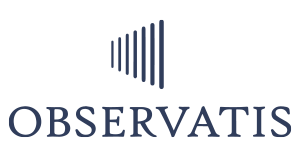“The squeaky wheel gets the grease—but it’s the silent ones that slip away.”
While leaders focus on loud discontent, it’s the quietly disengaged employees—those who smile, nod, and vanish—that often cost the most.
Spotting Turnover Before It Happens
“What if you knew who might leave—before they knew it themselves?”
Turnover is rarely sudden. It’s a slow, often invisible drift. An employee may still show up, meet deadlines, and smile in meetings—while emotionally disengaging beneath the surface.
By the time you receive their resignation letter, the real damage has already been done: lost productivity, morale dips in their team, and expensive rehiring.
The Case for Preemptive Insight
Traditional metrics are lagging indicators. They tell you what happened—not what’s unfolding right now. That’s where Observatis comes in.
It’s not just who’s unhappy—it’s who might be drifting.
What We Track:
– Patterns in job stress, support, and satisfaction
– Changes in goal alignment or productivity rhythms
– Tenure-based shifts in engagement and communication
– Leadership and team climate sentiment
From Survey to Signal: Powered by Observatis’s Patented ML Model
Losing top talent isn’t just costly—it’s contagious. Unaddressed turnover risks silently influence team dynamics, increase stress on remaining staff, and erode organizational trust.
What’s worse? Often, the highest-performing and most engaged employees are the ones silently burning out.
Don’t let flight risk catch you off guard.
With Observatis, organizations can move beyond lagging indicators and begin reading their workforce in real time.
Why It Matters?
Losing top talent isn’t just costly—it’s contagious. Unaddressed turnover risks silently influence team dynamics, increase stress on remaining staff, and erode organizational trust.
What’s worse? Often, the highest-performing and most engaged employees are the ones silently burning out.
Don’t let flight risk catch you off guard.
With Observatis, organizations can move beyond lagging indicators and begin reading their workforce in real time.


Emerging Scientific Insights
A 2023 meta-analysis published in the Journal of Applied Psychology found that turnover intentions can be predicted up to 6 months before employees take action, based on micro-patterns in communication and work behavior.
At MIT Sloan, researchers studying “behavioral churn markers” have shown that changes in meeting engagement, tone in written communication, and peer network interaction are reliable early predictors of exits—even when performance appears unaffected.
Observatis integrates these behavioral markers into live organizational diagnostics to move from reactive exit management to proactive retention.
Pioneers Lighting the Path
Several forward-thinking organizations are leveraging AI to proactively address employee turnover:
IBM: Utilizes its Watson Talent Insights platform to analyze employee data, predicting attrition risks and enabling targeted retention strategies.
Unilever: In collaboration with Accenture and SkyHive, Unilever has implemented AI-driven tools to identify skill gaps and provide reskilling opportunities, aiming to enhance employee engagement and reduce turnover.
Kronos (now UKG): Employs predictive analytics to monitor employee engagement levels, allowing for early intervention when signs of disengagement or potential turnover are detected.
These organizations exemplify how integrating AI and predictive analytics into HR practices can lead to more informed decision-making and improved employee retention.
Industry Signals from Recent Research
Early warning signs are often missed. A 2023 study published in the Journal of Organizational Behavior found that employees exhibiting micro-behaviors like reduced participation in team meetings, fewer social interactions, and limited cross-functional collaboration were 3× more likely to resign within 90 days.
Proactive analytics reduce attrition. According to MIT Sloan Management Review, companies using predictive models to detect disengagement and risk markers saw a 22% improvement in retention among at-risk employee segments compared to organizations relying on annual surveys alone.
Emotional disconnect is a strong signal. Research from NIH’s National Library of Medicine highlights that a decline in emotional commitment—before performance drops—is often the most accurate predictor of silent attrition.
Turnover costs are climbing. Gallup estimates that voluntary turnover costs U.S. businesses $1 trillion per year, with most exits driven by unresolved dissatisfaction that was never captured by traditional HR metrics.
Flight risk modeling is maturing. The HR Analytics Think Tank reports that over 45% of Fortune 500 organizations are now investing in machine learning–based flight risk models, signaling a shift from reactive to predictive retention strategies.
Your Flight Risk Action Blueprint
Use this checklist to audit your current systems:
– [ ] Do we have visibility into real-time sentiment across departments?
– [ ] Are we measuring behavioral disengagement, not just performance?
– [ ] Is our engagement data tied to tenure and job class segmentation?
– [ ] Are exit interview insights actually informing pre-exit strategy?
– [ ] Can we track patterns of emotional fatigue or stress among top performers?
– [ ] Do managers receive alerts when early risk signals appear?
– [ ] Is there an internal benchmark for healthy vs. unhealthy attrition?
If you checked 3 or fewer boxes, you may be missing critical churn signals.
Want to Know Where Hidden Risk Lives in Your Workforce?
If you’re starting to wonder which employees might be quietly disengaging or preparing to leave — we should talk. We’re helping organizations surface early indicators of flight risk before it hits the bottom line.
Let’s take a look together at how your existing signals might be pointing to unseen attrition patterns.
When you’re ready, we’re here to unpack what’s possible.
References & Credits
NIH National Library of Medicine. “The Relationship Between Emotional Commitment and Voluntary Turnover.” 2022.
MIT Sloan Management Review. “Predictive People Analytics in Retention Strategy.” 2023.
Gallup. “State of the Global Workplace: 2023 Report.”
Journal of Organizational Behavior. “Behavioral Indicators of Employee Attrition.” Wiley, 2023.
HR Analytics Think Tank. “Trends in Predictive Modeling for Employee Retention.” 2024.
Observatis ML Models & Data Frameworks (2024), internal IP documentation.





Anonymous
Love the framing of “risks you can’t see.” Silent churn has been one of our biggest blind spots.
Anonymous
It’s not always the low performers who leave first. We’ve seen high-engagement, high-potential talent walk quietly—and only then do we see the signs in hindsight. This makes a strong case for early detection.
Anonymous
Traditional exit interviews only tell you what happened—not what was happening. Predictive engagement intelligence is overdue.
Anonymous
I’m curious if Observatis can connect flight risk to skill gap or lack of career development. That’s often the root cause in our agency.
Anonymous
We’ve been talking about quiet quitting—this takes it a step further: quiet leaving. Thanks for this lens.
Anonymous
Appreciate how this connects risk insights to action. Insight without intervention is just another missed opportunity.
Anonymous
We’ve had several unexpected exits this year—great people we thought were solid. We’re realizing the need to track intent, not just performance. This article resonates.